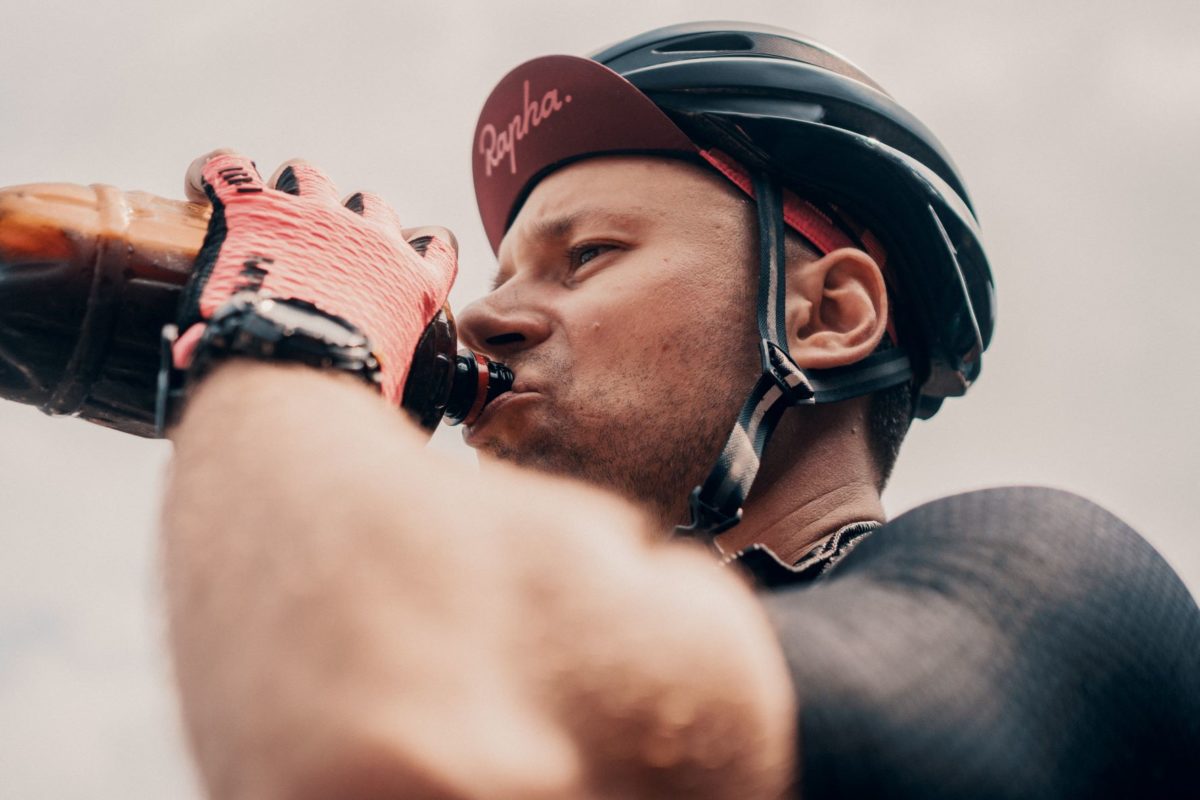If you are aware of the most important drinking principles when doing sports in the cold, you will get by without difficulty even in winter.
Sporting activities in the cold are usually well tolerated; problems only arise when the body cools down too much despite heat build-up in the working muscles. Exposed areas such as the nose, cheeks or ears freeze at skin temperatures of less than 0 °C (1). However, fluid intake does not play a role in this context.
Sweating in cold weather depends on clothing
The amount of fluid required during exercise depends primarily on the expected sweat losses. For exertion lasting a few hours and in moderate warmth, these range somewhere between two deciliters and two liters per hour, depending on the intensity of the sporting performance. In the winter, if you’re not completely wrapped in heat-retaining clothing, more body heat is radiated directly to the cold surrounding air in the cold. As a result, the sweat rate is somewhat lower in the cold. The extent of sweating therefore depends on the clothing and how warm it keeps you. With light clothing, the difference between a warm, humid day and a cold, dry day may well be one liter of sweat per hour (2).
In the cold, the air is always dry. Cold inhaled air is moistened in the lungs, and when we exhale, some liquid is lost in the form of water vapor. This loss of fluid is seen in very cold temperatures as a small cloud of mist that we give off with each breath. At moderate temperatures, respiratory losses at rest amount to about three deciliters per day (3). However, in extreme cases of very long physical activity in the cold, they reach up to two liters per day (4). For more common situations, losses are expected to average one to two deciliters per hour of intense exercise. Thus, respiratory losses do not yet play a decisive role in “shorter” workloads and the drinking behavior does not have to be adapted for this reason. However, in the case of long, all-day efforts in the cold, such as ski touring, these losses become significant and must be consciously compensated for after the effort. And depending on the simultaneous loss of sweat, one must increase the drinking quantity accordingly already while exercising.
Estimating the individual drinking quantity
The sensible amount to drink therefore depends mostly on the sweat losses, even in the cold. The generally recommended 0.4 to 0.8 liters per hour of exercise at “decent” intensity is a good estimate, even in the cold. However, sweat losses vary considerably from person to person, so determining how much an individual should drink is a more accurate approach. On the website of the Forum for Sports Nutrition, you can easily estimate this with the help of the drinking amount calculator (www.forumsportnutrition.ch > nutrition > drink-calculator). If you lose too much fluid during exercise, fatigue sets in more quickly. The limit in endurance sports is a loss of four percent of body weight, in other sports a little earlier. In addition, dehydration slows recovery and the body is generally more stressed. That’s why the goal in training is to have as little or no dehydration as possible. And how hot or cold should a drink be? There are no studies on the ideal beverage temperature in the cold. And when it comes to the influence of beverage temperature on gastric emptying, the study results go in all directions.
Therefore, common sense is needed. And common sense says: So warm or so hot that the beverage is easy to drink. When choosing the right drink for the cold, there is one more aspect to consider: carbohydrates. Because carbohydrates are needed just as in sports in the heat, if the load exceeds a certain duration and intensity. The limit here is around 45 to 60 minutes with moderate to high intensity. Up to that point, no special supply is needed, but after that, the amount of carbohydrate supplied should be 30 to 60 grams per hour. Whether a warm sports drink or sweetened tea is preferred as a supplier is of little importance. Warm broth, on the other hand, does not provide carbohydrates ( but it does provide salt).
Nutrition expert Paolo Colombani is a scientific consultant running his private company.
Sources:
(1) Castellani JW, Young AJ. Br. J. Sports Med., 2012; 46: 788-91
(2) Sawka MN et al. Sports Med., 2015; 45 Suppl 1: S51-60
(3) EFSA Panel on Dietetic Products Nutrition and Allergies. EFSA J., 2010; 8: 1459
(4) Westerterp KR et al. Pflügers Arch., 2000; 439: 483-8
Text from FITforLIFE– This blog post was provided to us by the Swiss magazine FIT for LIFE. If you want to read regularly informative knowledge articles in the field of running and endurance sports, click here.

